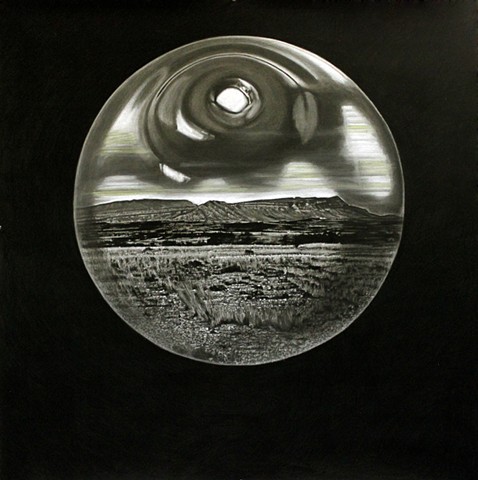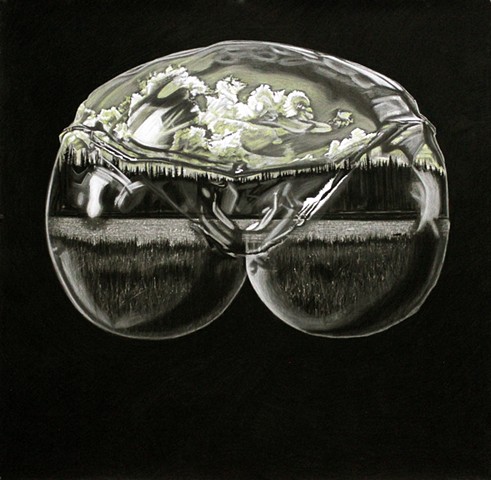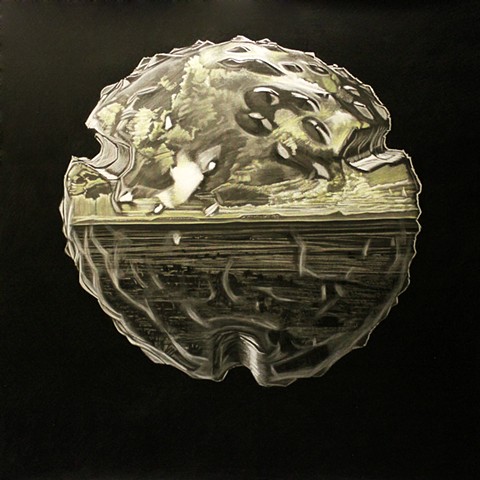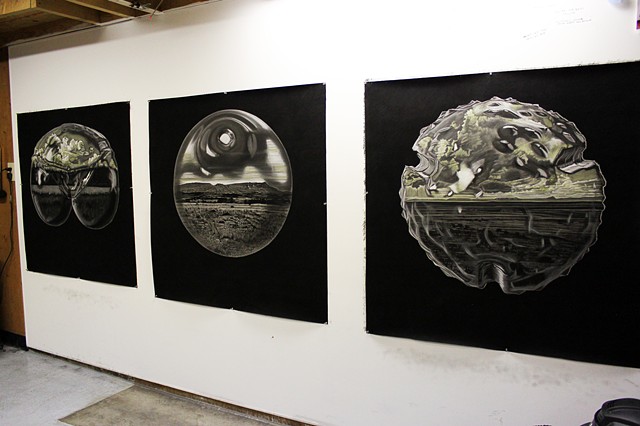MICRO-ECOS
Creative Statement – MICRO-ECOS
In collaboration with Assistant Professor Brandon Gellis, a digital artist, in the Department of Art and Art History and Associate Professor Tom Minckley, a biogeographer and palynologist, in the Department of Geography, my intention was to interpret the scientific process in a visually poetic way for viewers to contemplate. Learning about the science was a fascinating experience in itself and immediately inspired me to think about scale as a design principle in terms of representing the ideas of the time and space involved in the research. Palynologists spend a great deal of time and effort at the microscope, meticulously observing and counting tiny grains of pollen in order to extrapolate how the landscape might have looked during different periods of geologic time. Both looking through a microscope and binoculars produces a similar sense of tunnel vision, and I find the contrast between such micro and macro scales is both subtle and profound. Therefore, I based the imagery in the drawings to reflect this tunneling effect metaphorically by embedding landscapes of the sites where the pollen was collected within three-dimensional models of the dominant pollen found there, initially created by Gellis and evident in his physical-designed work. Viewers are invited to put themselves in the shoes of scientists, like Minckley, and ponder the macro on the basis of the micro. The drawings are made out of charcoal, basically carbon, meaning that the material used was once alive, most often in the form of burnt plants or animals. The subtly colored areas of yellow are comprised of actual pollen and pigment to further enhance the concepts of materiality and shifts of scale in time and space. I hope this collaboration between the arts and sciences will inspire reluctant audiences to think about the various roles of research in their lives and in society.



